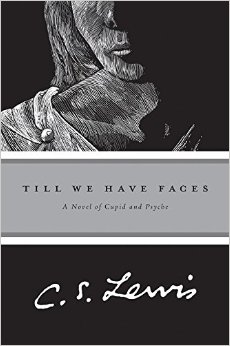 I am doing a blog series on Novels Every Christian Should Consider Reading.
I am doing a blog series on Novels Every Christian Should Consider Reading.
Kathleen B. Nielson (PhD in literature, Vanderbilt University) serves as director of women’s initiatives for The Gospel Coalition.
Author of the Living Word Bible Studies, she speaks often at women’s conferences and loves working with women in studying the Bible. Her latest book, co-edited with D. A. Carson, is Here Is Our God: God’s Revelation of Himself in Scripture.

Till We Have Faces is C. S. Lewis’ final novel—and a favorite of Lewis himself. That might be enough reason to read it. The problem is that, once you’ve read it, you have to read it again. It’s not that you don’t get it the first time. It’s that you want to get the layers of it. This novel keeps unfolding in remarkable ways, on repeated readings.
What unfolds is not a new story but a retelling of the myth of Cupid and Psyche, set by Lewis in a little kingdom called Glome somewhere north of Greek lands, several hundred years B. C. His tale is as universal as the stuff of myths but as concrete as the frozen spills of milk and puddles and dung in the palace courtyard where the children are sliding as the book opens. It is narrated in first person by Glome’s Queen Orual, Psyche’s sister, with the stated purpose of accusing the gods. Part I is Orual’s charge, her record of how the gods have taken away her beautiful beloved Psyche.
Lewis creates a strong, clear, personal voice for this intelligent woman who rules long and well with a veil covering her ugly face (and relentless work veiling her broken, bitter heart). Through Orual he reveals the struggle to believe in what is invisible. He is telling the story of faith—his own story, and the story of every person who comes to believe in God.
The crucial change in Lewis’ version of the myth is that the shining palace where Psyche goes to live with her god-husband is made invisible to mortals (except Psyche). Orual does not see it (except for a fleeting glimpse). On this basis she justifies her actions that destroy her loved-one’s happiness. How could Orual have known it was all real? Why do the gods not show themselves? Orual lives out the struggle to reconcile the light of reason (shown by “Fox,” Orual’s Greek tutor) with the more opaque, mysterious realm (shown by Glome’s gods) where blood sacrifices must be made.
Struggle to see the gods is at the heart of Orual’s struggle to see herself, in light of them. Orual shows us the process of confronting both self-deception and bare truth about who we fallen human beings are. It is wonderful to come to Part II, which Orual writes because, in a climactic moment of vision when called to read her charge (Part I) before the gods, she sees she has not told her story truly. She has called “love” what was not love but self-serving jealousy. She has refused to see. She has veiled her face and hidden from herself. But now at last she sees herself:
When the time comes to you at which you will be forced at last to utter the speech which has lain at the center of your soul for years, which you have, all that time, idiot-like, been saying over and over, you’ll not talk about the joy of words. I saw well why the gods do not speak to us openly, nor let us answer. Till that word can be dug out of us, why should they hear the babble that we think we mean? How can they meet us face to face till we have faces?
The light of true seeing pierces through, at this novel’s end. There is a Job-like answer to Orual’s charge, and there is the kind of losing oneself and finding oneself that happens ultimately only in Christ.
Of course, having finished, you want to go back and read Part I again, in light of Part II. With each rereading comes a bit more light, as this novel’s layers masterfully unfold.


















